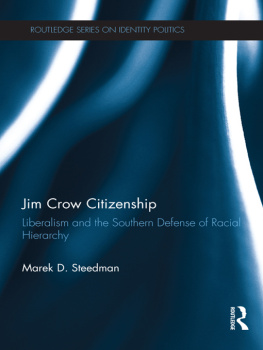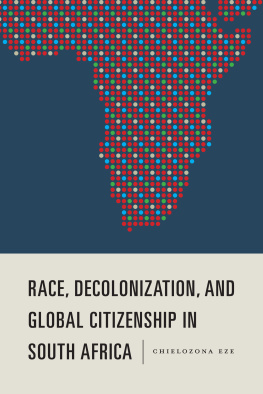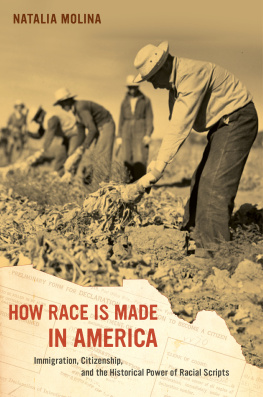Jessica Barbata Jackson - Dixies Italians: Sicilians, Race, and Citizenship in the Jim Crow Gulf South
Here you can read online Jessica Barbata Jackson - Dixies Italians: Sicilians, Race, and Citizenship in the Jim Crow Gulf South full text of the book (entire story) in english for free. Download pdf and epub, get meaning, cover and reviews about this ebook. year: 2020, publisher: LSU Press, genre: Politics. Description of the work, (preface) as well as reviews are available. Best literature library LitArk.com created for fans of good reading and offers a wide selection of genres:
Romance novel
Science fiction
Adventure
Detective
Science
History
Home and family
Prose
Art
Politics
Computer
Non-fiction
Religion
Business
Children
Humor
Choose a favorite category and find really read worthwhile books. Enjoy immersion in the world of imagination, feel the emotions of the characters or learn something new for yourself, make an fascinating discovery.

- Book:Dixies Italians: Sicilians, Race, and Citizenship in the Jim Crow Gulf South
- Author:
- Publisher:LSU Press
- Genre:
- Year:2020
- Rating:3 / 5
- Favourites:Add to favourites
- Your mark:
- 60
- 1
- 2
- 3
- 4
- 5
Dixies Italians: Sicilians, Race, and Citizenship in the Jim Crow Gulf South: summary, description and annotation
We offer to read an annotation, description, summary or preface (depends on what the author of the book "Dixies Italians: Sicilians, Race, and Citizenship in the Jim Crow Gulf South" wrote himself). If you haven't found the necessary information about the book — write in the comments, we will try to find it.
Dixies Italians: Sicilians, Race, and Citizenship in the Jim Crow Gulf South — read online for free the complete book (whole text) full work
Below is the text of the book, divided by pages. System saving the place of the last page read, allows you to conveniently read the book "Dixies Italians: Sicilians, Race, and Citizenship in the Jim Crow Gulf South" online for free, without having to search again every time where you left off. Put a bookmark, and you can go to the page where you finished reading at any time.
Font size:
Interval:
Bookmark:
Dixies Italians
Dixies Italians
Sicilians, Race, and Citizenship in the Jim Crow Gulf South
Jessica Barbata Jackson

Louisiana State University Press
Baton Rouge
Published by Louisiana State University Press
Copyright 2020 by Louisiana State University Press
All rights reserved
Manufactured in the United States of America
First printing
Designer: Laura Roubique Gleason
Typeface: Whitman
Printer and binder: LSI
Maps throughout this book were created using ArcGIS software by Esri. ArcGIS and ArcMap are the intellectual property of Esri and are used herein under license. Copyright Esri. All rights reserved. For more information about Esri software, please visit www.esri.com.
Portions of chapter 1 first appeared in Before the Lynching: Reconsidering the Experience of Italians and Sicilians in Louisiana (1870s90s), Louisiana History: The Journal of the Louisiana Historical Association 58, no. 3 (2017): 30038, and are used by permission of the editor.
Library of Congress Cataloging-in-Publication Data
Names: Jackson, Jessica Barbata, author.
Title: Dixies Italians : Sicilians, race, and citizenship in the Jim Crow Gulf South / Jessica Barbata Jackson.
Description: Baton Rouge : Louisiana State University Press, 2020. | Includes bibliographical references and index.
Identifiers: LCCN 2019047626 (print) | LCCN 2019047627 (ebook) | ISBN 978-0-8071-7172-1 (cloth) | ISBN 978-0-8071-7376-3 (pdf) | ISBN 978-0-8071-7375-6 (epub)
Subjects: LCSH: ItaliansGulf StatesHistory. | SiciliansGulf StatesHistory. | Gulf StatesRace relationsHistory.
Classification: LCC F220.I8 J33 2020 (print) | LCC F220.I8 (ebook) | DDC 305.800976dc23
LC record available at https://lccn.loc.gov/2019047626
LC ebook record available at https://lccn.loc.gov/2019047627
The paper in this book meets the guidelines for permanence and durability of the Committee on Production Guidelines for Book Longevity of the Council on Library Resources. 
For Luca and Josh
Contents
1
From Proper Citizens to Alien Electors: Reconsidering the Experience of Sicilians in Louisiana before and after the Lynchings
2
The Lynchings of Italians in Louisiana and Mississippi (1880s1910)
3
Electoral Freaks and Monstrosities in Louisianas Disenfranchisement Debates (18961898)
4
Segregating Italians, Sicilians, and Schools in Turn-of-the-Century Mississippi
5
Legislating Miscegenation, Marriages, Whiteness, and Italians in Louisiana and Alabama
Illustrations
FIGURES
1 AND 2
Sketches, From Sunny Italy, Arrival of a Shipload of Immigrants, Times Democrat, October 18, 1888
3
Regarding the Italian Population, The Mascot, September 7, 1889
4
Encouraging Italian Immigration, The Mascot , January 5, 1889
5
Result of Encouraging Immigration, The Mascot, April 13, 1889
6
Lynch Law, The Mascot, March 14, 1891
7
A Bad Easter Egg: The Bloodiest Carnival and Lent in the State of Louisiana, The Mascot, March 29, 1891
MAPS
1
Density of Italian immigrant populations in 1910
2
The Italian Quarter of New Orleans
3
Origins of Italian benevolent associations in New Orleans
4
Locations of lynchings of Sicilians and other Italians between 1886 and 1901
5
Route of the Dago Parade, March 22, 1896
6
Reactions to the Dago Clause according to agriculturally disparate regions
Acknowledgments
W hen people learn of my research, they invariably ask if I am from Louisiana (Im not) or if I am Italian (only my paternal grandfather was born there). I stumbled onto this project as a first-semester graduate student. Having taught history at the secondary level for a number of years, I had long been drawn to the cyclicality of immigration history and the shifting complications of race. I first thought of writing some version of how Italians became white; I quickly discovered that that book (and many others like it) had already been written. But, in an early America readings seminar, I encountered the complex and layered world of New Orleans; with encouragement to engage a transnational lens, to New Orleans were added migration studies, the racial history of the American South, and the unification of modern Italy. As questions abounded about race and violence, citizenship and identity, and immigrants and ethnicity, my inquiry began, leading to this book.
For this direction and focus, I am eternally indebted for my time and training in the history department at the University of California at Santa Cruz. I am grateful to everyone with whom I had the honor to work, particularly Alice Yang, Noriko Aso, Greg OMalley, Lynn Westerkamp, and Vanita Seth, but especially my mentors, David Brundage, Kate Jones, and Cindy Polecrittithank you for your perceptive critiques, challenging questions, and your fervent and enthusiastic support of this work. Many thanks to my graduate colleagues and my writing groupMelissa Brzycki, Stephanie Montgomery, and Kiran Garchawho commented on early versions of this manuscript. And for my innumerable students over the yearsfrom Ecuador to Italy to Santa Cruz to Fort Collinsthank you for challenging me and inspiring me to pursue this path.
I offer my sincere gratitude to the archivists who provided keen insights during my development of this project, notably those at the Louisiana and Special Collections at the University of New Orleans and Sal Serio at the American Italian Research Library. For financial assistance in conducting this research, thank you to the Conference of Presidents of Major Italian American Organizations, the UC Santa Cruz History Department, the UC Santa Cruz Humanities Institute, the University of Minnesotas Immigration History Research Center Archives, and the Summersell Center for the Study of the South. To the scholars around the country who took the time to answer a chance query from a graduate student, many thanks for pointing me in many fruitful directions.
In bringing this book to fruition, I consider myself abundantly fortunate to have found a home in the history department at Colorado State University. Thank you to all of my colleagues for your warm welcome, support, and encouragement, particularly my department chair Robert Gudmestad, Ann Little, my junior faculty comrades, and especially Sarah Payne, whose discerning eye to chapter drafts has considerably enhanced the final outcome. To CSU Writes and Kristina Quynn, to my accountability writing group Cate Dicesare, Ellie Moseman, and Cerissa Stevenson, and to my write-on-site group of scholar activists, OiYan Poon and Ricki Ginsbergthank you for your time and space, your direction and advice, your collaboration and camaraderie. I owe a special debt to my graduate students Eric Newcombe and Jacob Swisher, whose research assistance was instrumental in the final stage of this project, and to Megan Clevenger for her last-minute on-the-ground help in New Orleans. My sincere appreciation to Joshua Reyling and the Geospatial Centroid at CSU for the creation of such stunning maps to accompany my research. From beginning to end, working with LSU Press has been an absolute professional pleasurethank you to my editor, Rand Dotson, for believing in and championing this project; to my managing editor, Catherine Kadair, for shepherding this book through the finishing phases; to my copy editor, Gary von Euer, for his sharp eye and attention to detail; and to the anonymous reviewer whose incisive and constructive comments have helped to make this a better book.
Finally, this book would not have been possible without the love and support of my family and friends, too numerous to name. To my Fort Collins friends who have offered us a new home, to my Reedies near and (mostly) far, and to my California friends who will always be familyI am deeply thankful for your constancy and community. To my dad, Dennis Barbata, for his unwavering encouragement and for venturing with me to Italy to visit the ruins of our ancestral home in Ginestra degli Schiavoni. To my mother-in-law, Jean Jackson, who wishes we lived closer but still offers her steadfast and ever-willing assistance any way she can. To my mom, Judy Barbata, for her unfaltering dedication, who moved halfway across the country without so much as batting an eye to help our family and to care for our son. For my son Luca, who has been on this journey for longer than he realizesI hope to make you proud. And for Josh, my best friend and partner in everythingthank you for believing in me, for challenging and sustaining me, for advocating for and empowering me, for listening to me read countless drafts aloud, and for being willing to go on this wild and unconventional journey; for this and for all the adventures still ahead.
Next pageFont size:
Interval:
Bookmark:
Similar books «Dixies Italians: Sicilians, Race, and Citizenship in the Jim Crow Gulf South»
Look at similar books to Dixies Italians: Sicilians, Race, and Citizenship in the Jim Crow Gulf South. We have selected literature similar in name and meaning in the hope of providing readers with more options to find new, interesting, not yet read works.
Discussion, reviews of the book Dixies Italians: Sicilians, Race, and Citizenship in the Jim Crow Gulf South and just readers' own opinions. Leave your comments, write what you think about the work, its meaning or the main characters. Specify what exactly you liked and what you didn't like, and why you think so.




